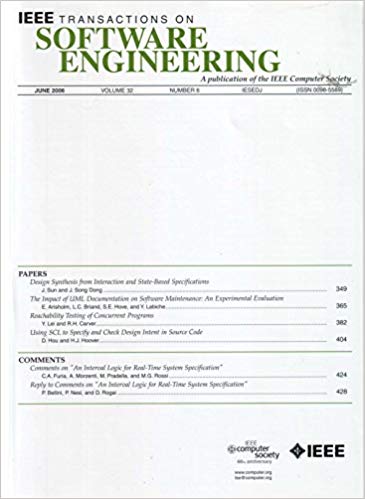RECOVER: Toward Requirements Generation From Stakeholders’ Conversations
IF 5.6
1区 计算机科学
Q1 COMPUTER SCIENCE, SOFTWARE ENGINEERING
引用次数: 0
Abstract
Stakeholders’ conversations requirements elicitation meetings hold valuable insights into system and client needs. However, manually extracting requirements is time-consuming, labor-intensive, and prone to errors and biases. While current state-of-the-art methods assist in summarizing stakeholder conversations and classifying requirements based on their nature, there is a noticeable lack of approaches capable of both identifying requirements within these conversations and generating corresponding system requirements. These approaches would assist requirement identification, reducing engineers’ workload, time, and effort. They would also enhance accuracy and consistency in documentation, providing a reliable foundation for further analysis. To address this gap, this paper introduces恢复:从涉众的对话中生成需求
涉众的对话、需求引出会议对系统和客户的需求提供了有价值的见解。然而,手动提取需求是耗时的、劳动密集型的,并且容易出现错误和偏差。虽然当前最先进的方法有助于总结涉众的对话,并根据它们的性质对需求进行分类,但是明显缺乏既能识别这些对话中的需求,又能生成相应系统需求的方法。这些方法将有助于需求识别,减少工程师的工作量、时间和努力。它们还将提高文件的准确性和一致性,为进一步分析提供可靠的基础。为了解决这一差距,本文介绍了RECOVER(从对话中获取需求),这是一种新颖的会话需求工程方法,它利用自然语言处理和大型语言模型(llm)来支持从业者通过分析单个会话转向,从涉众交互中自动提取系统需求。该方法使用混合方法研究设计进行评估,该设计将统计性能分析与涉及需求工程师的用户研究相结合,目标为两个粒度级别。首先,在会话回合级别,评估在识别需求相关对话和根据正确性、完整性和可操作性生成的需求的质量方面度量RECOVER的准确性。其次,在整个对话层面,评估评估了RECOVER在综合来自完整涉众讨论的综合系统需求方面的总体有用性和有效性。对RECOVER的经验评估显示了良好的性能,生成的需求显示了令人满意的正确性、完整性和可操作性。结果还强调了从对话中自动提取需求的潜力,作为在保持人类监督的同时提高效率的辅助手段。
本文章由计算机程序翻译,如有差异,请以英文原文为准。
求助全文
约1分钟内获得全文
求助全文
来源期刊

IEEE Transactions on Software Engineering
工程技术-工程:电子与电气
CiteScore
9.70
自引率
10.80%
发文量
724
审稿时长
6 months
期刊介绍:
IEEE Transactions on Software Engineering seeks contributions comprising well-defined theoretical results and empirical studies with potential impacts on software construction, analysis, or management. The scope of this Transactions extends from fundamental mechanisms to the development of principles and their application in specific environments. Specific topic areas include:
a) Development and maintenance methods and models: Techniques and principles for specifying, designing, and implementing software systems, encompassing notations and process models.
b) Assessment methods: Software tests, validation, reliability models, test and diagnosis procedures, software redundancy, design for error control, and measurements and evaluation of process and product aspects.
c) Software project management: Productivity factors, cost models, schedule and organizational issues, and standards.
d) Tools and environments: Specific tools, integrated tool environments, associated architectures, databases, and parallel and distributed processing issues.
e) System issues: Hardware-software trade-offs.
f) State-of-the-art surveys: Syntheses and comprehensive reviews of the historical development within specific areas of interest.
 求助内容:
求助内容: 应助结果提醒方式:
应助结果提醒方式:


